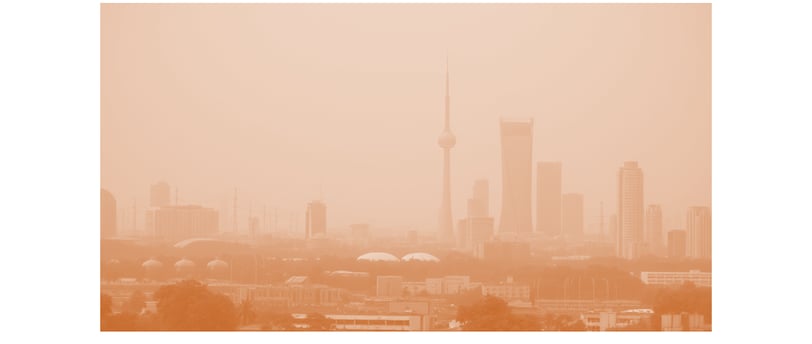Air Pollution: Causes, Effects, and Solutions
EDUCATION


Air Pollution: Causes, Effects, and Solutions
### Introduction
Air pollution is one of the most significant environmental challenges facing the modern world. It affects human health, ecosystems, and climate patterns. With increasing industrialization and urbanization, air quality has deteriorated, leading to various environmental and health concerns. This article explores the causes, effects, and potential solutions to air pollution, highlighting the importance of collective action to address this global issue.
### Causes of Air Pollution
Air pollution originates from both natural and human-made sources. While natural sources include volcanic eruptions, wildfires, and dust storms, human activities contribute the most to the degradation of air quality.
#### 1. Industrial Emissions
Factories and power plants release large amounts of pollutants, including sulfur dioxide (SO2), nitrogen oxides (NOx), and particulate matter (PM). The burning of fossil fuels such as coal and oil is a major contributor to air pollution, resulting in acid rain and respiratory diseases.
#### 2. Vehicle Emissions
Transportation is a significant source of air pollution. Cars, trucks, and motorcycles emit carbon monoxide (CO), nitrogen oxides, and volatile organic compounds (VOCs). The combustion of gasoline and diesel fuels leads to smog formation and greenhouse gas accumulation, exacerbating climate change.
#### 3. Agricultural Activities
Agriculture contributes to air pollution through livestock methane emissions, pesticide application, and burning crop residues. Ammonia (NH3) released from fertilizers contributes to the formation of fine particulate matter, impacting both air quality and human health.
#### 4. Household Pollutants
Indoor air pollution is another critical issue, often resulting from burning biomass, coal, and wood for cooking and heating. Poor ventilation exacerbates the effects, exposing individuals to high concentrations of harmful pollutants such as carbon monoxide and formaldehyde.
#### 5. Deforestation
Deforestation leads to an increase in carbon dioxide (CO2) levels as fewer trees are available to absorb greenhouse gases. This process accelerates global warming and disrupts local air quality, particularly in areas prone to wildfires.
### Effects of Air Pollution
Air pollution has severe consequences for both human health and the environment. It is linked to various diseases, ecosystem damage, and climate change.
#### 1. Health Impacts
- Respiratory Diseases: Exposure to polluted air increases the risk of asthma, bronchitis, and chronic obstructive pulmonary disease (COPD).
- Cardiovascular Issues: Airborne pollutants can lead to heart diseases, hypertension, and strokes.
- Cancer: Long-term exposure to air pollution, especially fine particulate matter and toxic chemicals, is associated with lung cancer and other types of malignancies.
- Neurological Effects: Emerging research suggests a link between air pollution and cognitive disorders such as dementia and Alzheimer’s disease.
#### 2. Environmental Consequences
- Acid Rain: Sulfur dioxide and nitrogen oxides combine with water vapor in the atmosphere to form acid rain, damaging soil, water bodies, and plant life.
- Ozone Depletion: Certain air pollutants contribute to the depletion of the ozone layer, increasing exposure to harmful ultraviolet (UV) radiation.
- Global Warming: Greenhouse gases trap heat in the atmosphere, leading to rising temperatures, extreme weather events, and melting polar ice caps.
- Biodiversity Loss: Pollution affects wildlife, reducing populations and disrupting natural habitats.
### Solutions to Air Pollution
Addressing air pollution requires a combination of government policies, technological advancements, and public awareness campaigns. Below are some effective measures to combat air pollution.
#### 1. Transition to Renewable Energy
Shifting from fossil fuels to renewable energy sources such as solar, wind, and hydroelectric power can significantly reduce emissions. Governments should invest in clean energy technologies and promote their adoption through incentives.
#### 2. Enhancing Public Transportation
Improving public transit systems and encouraging the use of electric vehicles (EVs) can reduce emissions from transportation. Governments should implement policies that promote sustainable urban mobility and reduce traffic congestion.
#### 3. Industrial Regulations
Stricter regulations on industrial emissions, including the implementation of pollution control technologies such as scrubbers and filters, can minimize harmful releases. Companies should adopt cleaner production methods and reduce their environmental footprint.
#### 4. Sustainable Agricultural Practices
Promoting sustainable farming techniques, such as precision agriculture and organic farming, can minimize pesticide use and methane emissions. Governments should support farmers in adopting environmentally friendly practices.
#### 5. Reforestation and Urban Green Spaces
Planting more trees and preserving forests can help absorb pollutants and enhance air quality. Urban areas should prioritize green spaces, such as parks and rooftop gardens, to mitigate the effects of pollution.
#### 6. Public Awareness and Behavioral Changes
Educating individuals about the dangers of air pollution and encouraging sustainable practices, such as reducing waste, conserving energy, and carpooling, can lead to positive environmental impacts. Public participation in policy-making processes is also crucial.
### Conclusion
Air pollution is a pressing global challenge that requires urgent action from governments, industries, and individuals. By implementing cleaner technologies, enforcing regulations, and promoting sustainable practices, we can improve air quality and protect public health. Collective efforts toward reducing emissions and adopting green initiatives will create a healthier and more sustainable future for generations to come.
